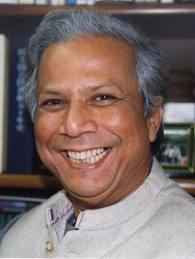Prince William and Kate Middleton
If the marriage of Prince William and Kate Middleton was an opportunity to reboot the royal family for the 21st century, with carefully timed press releases detailing every stitch of clothing down to the Jimmy Choo shoes on the Duchess of Cornwall’s feet, then the exquisite gown created for Ms. Middleton by Sarah Burton suggested a bride who is well suited to meet the demands of a high-definition display.
Times Topic: Kate Middleton — the Duchess of Cambridge (Royal Wedding, April 2011)The dress was, predictably, scrutinized on multiple forms of media within moments of Ms. Middleton’s appearance, and for hours afterward on television. And it was an enormous success for the bride, and a triumph for Ms. Burton, who became the creative director of the Alexander McQueen label last year after Mr. McQueen’s suicide.
The gown was a triumph not merely because it was pretty — or flawless, actually, a dress that is destined to create a global demand for long lace sleeves. This was also a significant fashion moment, because the design of the dress, the selection of its designer and even the degree of secrecy that surrounded its preparation seemed remarkably well calculated to project a specific image about Ms. Middleton. That is, she represents a new breed of the British monarchy, one that is respectful of its boundaries and traditions, but is not stuffy and off-putting to the general populace.
Ms. Middleton, now the Duchess of Cambridge, arrived at Westminster Abbey as a commoner, a fact that was pointed out on several broadcasts by commentators who noted she was already wearing a tiara — a 1936 Cartier halo lent to her by Queen Elizabeth. The tiara was supposedly a presumptuous thing to wear for a person who is not of royal blood. Well, la-di-da.
Though the dress was modern and structured by comparison, there were also echoes of the style of Prince William’s mother. The dress created by David and Elizabeth Emanuel for Lady Diana Spencer’s 1981 wedding to Prince Charles — though a poufy monstrosity — was designed with the same intention to stand out against the hugeness of the setting. Ms. Middleton’s dress, though, was as modern an approach to what befits a princess as Diana’s was a childhood cliché.
During the weeks leading up to the ceremony, the designer had been under strict instructions not to confirm her involvement, which also suggests a fairly savvy approach to managing the anticipation for what Ms. Middleton would wear. It was only when Ms. Burton, her head buried under a furry trapper hat, was recognized outside the Goring by the belt and shoes she was wearing on Thursday that it seemed likely that she was indeed the chosen designer.
Ms. Middleton, as depicted in the tabloids and in the recent Lifetime treatment of her patient romancing of Prince William, is well aware of the image she projects. She has been so careful that she has appeared boring, though that may well have been her intention, if she wished to ingratiate herself with a scandal-plagued family.
And yet, in her dress choices, she seems more sophisticated about modern life than other royals. It was a controversial, though savvy, decision for her sister and maid of honor, Pippa Middleton, to wear white, also by McQueen. When Pippa picked up the bride’s train, their matching dresses made the sisters appeared almost as one entity, distinct from the royals but still part of the family.


































